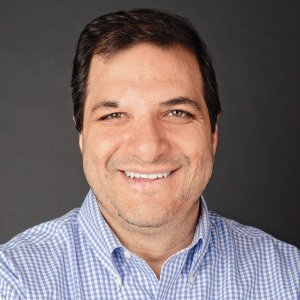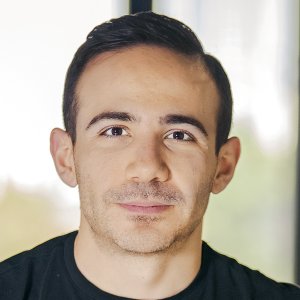
Continuous Education Ensures Outstanding Proficiency
Continuous medical education constitutes a broad concept closely related to professional competency. It is a serious need for physicians because of the incessant output of knowledge from biomedical research that continuously challenges our paradigms about health and disease and implies notable involvement for medical practice when describing the pathophysiology, diagnoses and treatments of every disease.
Among the different stages of medical education, practitioners are forced to follow a continued learning process to keep up-to-date on the knowledge and skills that ensure they will be successful professionals of outstanding proficiency. For physicians, it is key to train with strict and critical thinking through life-long learning. They should also be able to embrace methods of science into their practice, such as critical analysis.
Medical training needs to be assessed as a compilation of different types of knowledge, integrating experience, practice and accurate scientific background. It encompasses all the learning experiences physicians have with the conscious intention of habitually and persistently improving their proficiency. Education given after graduation entails a higher educational challenge. At this stage, the physician should decide on his own the most appropriate methodology and content for his or her learning either as a formal education course or by selecting in detail the contents and dates through continuing medical education.
Formal graduate education is focused on intellectual production. It has its own selective character and is nationally regulated and performed only by certain institutions. Nonformal graduate education, such as continuous medical education, has a nonselective profile and distinguishes itself by its flexibility and simple regulation. It is a clear and defined activity that supports the professional development of physicians and leads to improved patient outcomes. Continuous medical education is a self-regulated manner to ensure clinical competence and it shapes the growth and development of physicians.
Nevertheless, this modality has not figured in universities with the appropriate force, despite its essential role. It is our vision that continuous medical education will effectively assist physicians in the generation, translation, diffusion, critical appraisal and utilization of new knowledge that contributes to high-quality, compassionate and cost-sensitive care for patients. It encompasses those learning activities performed after graduation from formal programs with objectives restricted to upgrading, and generally are activities with a determined duration and are carried out in traditional ways.
The aim of continuing medical education is to establish a link between health professionals and the fast-growing body of knowledge to gain the competences required for optimal clinical practice. Postgraduate and continuing medical education differ from undergraduate education in that they go beyond increasing knowledge and skills to improving physician competency and performance in practice, ultimately leading to better patient health.
Continuous medical education encloses a system of learning as an expression of intellectual creation. It is controlled institutionally and targeted at graduate medical professionals in the following forms: courses, workshops, pre-congress courses, graduate seminars, specialty conferences, scientific debates, diplomas and studies whose contents are supervised and scrutinized by highly trained professionals in a similar manner to peerreview journals. Continuous medical educators must know and be able to use the literature, must derive practical and effective results that create or improve learning systems and must continue their own professional training. In the past two decades, the concept of self-managing one’s knowledge has earned a special connotation in the pedagogy field and the teaching-learning process.
It has been demonstrated that continuous medical education formats differ in their impact in clinical practice and in health professionals’ decision-making. Particularly, those with higher impacts are those that use case-based learning, small interactive learning groups, multifaceted educational programs that combine different media and the programs that are longer than one session. Magisterial conferences and written materials by themselves do not produce any change in clinical practice because of the complexity of the changing process, and through these actions only consciousness for the need for change can be created.
There are specific programs of continuous medical education and most have been institutionalized. In these, the progressive diffusion of new information and internet and communication technologies (ICTs), particularly mobile ones, has had and is still having its effects. Training schemes based on e-learning and on technologyenhanced learning are increasingly widespread.
Internet-based continuous medical education has components that differ from traditional continuous medical education and can offer additional value for both providers and participants. An element that contributes to this added value is internet usage and high coverage of ICTs, which have grown remarkably in areas such as healthcare administration. This makes it possible to take advantage of the increasing use of the internet and mobile devices for educational purposes.
A key element of ICTs is their ability to shorten distances, benefitting physicians who practice in remote and isolated areas. Additionally, this enhanced geographical coverage implies the availability of programs beyond borders, but needs can change across borders and programs must adjust to the needs of every community, incorporating elements such as language, culture and health-system limitations, but keeping in mind scientific evidence. Another advantage is cost, as traditional continuous medical education entails expenses such as facility leasing, catering, stationery, audiovisual equipment, transportation of staff and participants, while internetbased continuous medical education can be organized based on content, making it a more affordable learning alternative.
The selection and design of the most relevant continuous medical education is based on data from each physician’s present professional responsibilities and performance. One source to define specific content criteria to maintain competency in a variety of specialties comes from new efforts by professional societies. Evaluating continuous medical education in the context of performance improvement is a logical and essential element in the cycle of learning. Changes occurring in the field of continuous medical education demand new structures that direct thinking about the role of learning in each physician’s professional development.
Effective healthcare requires continuous learning. According to Nancy Bennet and her collaborators in an article in the journal Academic Medicine, the principles to build continuous medical education can be summarized as the following: act as a guide for physicians to understand their own learning needs to recognize opportunities and resources to match with needs to enhance proficiency and promote lifelong learning skills; study the role of continuous medical education to enhance physicians’ knowledge, performance, and healthcare results; design educational strategies based on research findings about how physicians learn and endorse changes in their professional conduction. These strategies should include standard and dynamic formats that incorporate new technical capabilities for synchronous and asynchronous learning; collaborate with other continuous medical education educators to maximize the ability of continuous medical education to satisfy the varied learning needs of physicians and healthcare systems; and grant that healthcare outcomes can be measured with clinical proficiency scales. For this endeavor it is crucial to broadcast information about healthcare innovation; and to increase the professional development of continuous medical educators, including their understanding and use of theory and research to provide effective support for appropriate changes in physicians’ knowledge, performance and healthcare outcomes.
Much of medicine’s contract with society is based on the integrity and appropriate use of scientific knowledge and technology. Physicians have a duty to uphold scientific standards, to promote research and to create new knowledge and ensure its appropriate use. The profession is responsible for the integrity of this knowledge, which is based on scientific evidence and physician experience. Sustaining knowledge and skills through continuous medical education is a characteristic of medical professionalism; therefore, it must be considered as a right and duty of every graduate physician
















